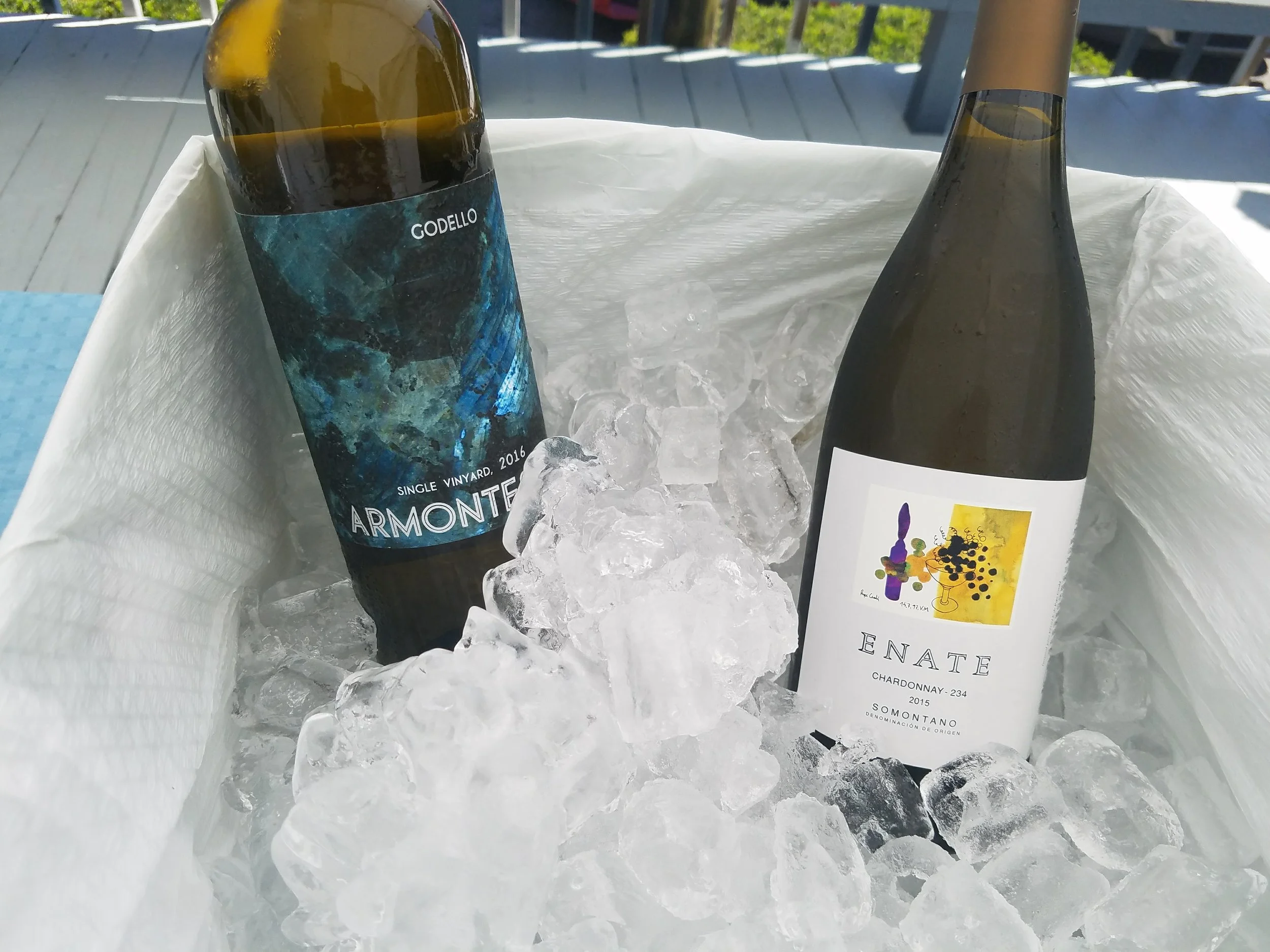White Wines of Spain: You Are Missing Out
One of the things I really enjoy about my time at the Divine Wine Emporium, is the opportunities I get to conduct a casual Saturday afternoon tasting. It is a chance for us to introduce our customers to new grapes, new regions, and new stories. In the summer months, we get to kick back outside on the deck and enjoy warm days with chilled wine. So when The Boss and I discussed a theme for the tasting, his suggestion to showcase white wines of Spain really got me thinking about something: Spain's white wines are incredibly underrated.
Sauvignon Blanc, Pinot Gris/Grigio, and Chardonnay sort of rule the white wine landscape. A large percentage of the wine-drinking population knows those grapes. Riesling, while not universally loved (in the USA, anyway), is still plenty popular and can reach incredible heights in Germany, Austria, and the Finger Lakes of New York. Signature varieties such as Austria's Grüner Veltliner and Argentina's Torrontés are identifiable white wines of those respective countries. In Castello d'Ambrosini, this house loves the range of French and Italian white wines available to us; we rarely meet one that we don't enjoy.
So that leaves us with Spain, whose most popular wine is the red Rioja. Beyond that, so many red wines of Spain have gained traction in this country. The Ribera del Duero region is gaining the respect of Rioja. Wines made from Monastrell grapes in Jumilla give big, bold fruitiness and power. The light red wines made from Mencia in Bierzo. Catalonian regions have a boatload of international red grapes like Syrah, Cabernet Sauvignon, and Merlot thriving.
But we are not here to talk about the red wines today. In fact, sitting there right under your nose (at consistent price points, by the way), are Spain's incredible array of white wines. For a long time, we really only had broad access to Rioja's white wines. Back in the early days, too many of these white wines were heavily oxidized and bland with very low acidity, thanks to warm fermentations in large wooden vats...not exactly a way to attract consumers to your wines. When stainless steel tanks were brought into the wineries, easier temperature control became possible, which meant cooler fermentations to preserve the natural fruit flavors of the white grapes. With that revelation, it opened the door for so many native Spanish varieties to shine both domestically and overseas.
The wines we chose really displayed the nuances of the different grapes; variations in fruitiness, nuttiness, texture, and overall complexity showed up easily, especially because we could taste everything as a flight! Here is a rundown of the five wines we sampled on Saturday; you can play along at home for roughly $75!
Legado de Moncayo Campo de Borja Garnacha Blanca ($13): Garnacha Blanca is the same as Grenache Blanc, a grape used in many southern French white blends. This producer is situated in the region of Campo de Borja, which is typically known for red Garnacha wines, but devoted a plot of vineyard land to the white grape. This Garnacha Blanca is refreshing with green herbs, Granny Smith apple, and lemon flavors. It was hot outside on Saturday, and this went over very well with those who joined us right after coming over from the beach.
Bodegas Godeval Armontes Valdeorras Godello ($19): Godello was a grape that nearly went extinct until the Palacios brothers rescued it in the 1970s. With proper site selection in regions such as Valdeorras in the southeastern corner of Galicia, Godello's fortunes turned for the better and have been trending upward since. A blast of lime zest on the nose, followed by citrus, stones and minerals on the palate, this is an incredible wine and well worth the spend. I have yet to have a bad wine made from Godello.
Bodegas Shaya Rueda Verdejo ($15): The region of Rueda is a white wine-only production zone that is located not far from red wine region of Ribera del Duero. Rueda is where the Verdejo grape calls home, but traces its origins to North Africa roughly 1,000 years ago. Like white Rioja, Verdejo-based wines were often heavily oxidized, but now show best in the fresh style made in stainless steel. This example from Shaya does ferment about 25% of the wine in barrel, giving an almondy flavor that complements the pure peach and nectarine fruit. A creamy texture is created through aging the wine on the lees for six months.
Orowines Kentia Albariño ($14): You may remember this wine from my post on Albariño. It's still as good now as it was then.
Enate Somontano Chardonnay 234 ($14): So we decided to throw in one of the international varieties just to show an expression of Chardonnay in Spain. Somontano is located in the foothills of the Pyrenees, which shields Somontano from harsh, wet, windy weather from the north, leading to a warm-to-hot and dry climate. As a result, Somontano can work with just about any grapes the soil will take as they can all ripen somewhat reliably. Case in point, this Chardonnay is very full-bodied, rich, and ripe. While not overly aromatic, the palate bursts with tropical and exotic fruits, similar to an Alsace Gewürztraminer, finishing with a sensation like you just ate a slice of peach pie. If you are a fan of New World Chardonnay, this is a must-try!


